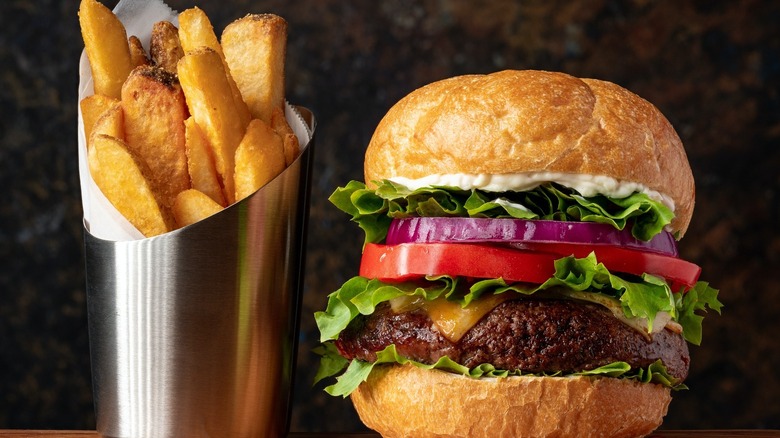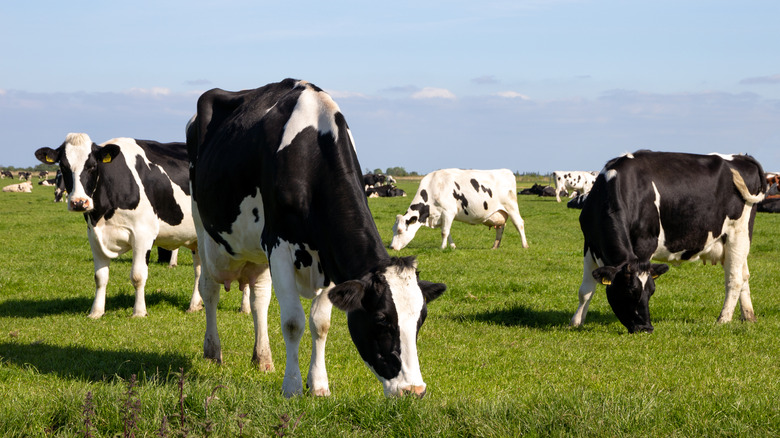This Big Change May Be Coming To Restaurant Menus After COP26
Restaurant menus have always been in flux, and we're not just talking about the way chefs rotate their dishes based on whatever might be in season.
With climate change now at the top of many people's minds, restaurants that took part in COP26 in Glasgow, Scotland decided to publicize the amount of greenhouse gas their food produces by listing the numbers on their menu, the Independent reports. For instance, a ham and wholegrain mustard sandwich has a carbon footprint of 0.3 kg of carbon dioxide (via A Recipe for Change); an order of fish and chips made with sustainable haddock has a carbon footprint of 1.1 (via A Recipe for Change); while a winter squash lasagne has a carbon footprint of 0.7kg (via a Recipe for Change).
Speaking with the Independent, local British politician Caroline Jackson called the concept "an interesting idea," noting that it "could be a really useful way of encouraging diet and behavioural change — which is something that needs to happen if we are to bring CO2 levels down."
Similar to the nutrition listing in a menu
The idea of food transparency isn't exactly new. Recall that in 2017, America's chain restaurants, which was specifically defined as "brands with 20 or more locations" were mandated to spell out how many calories they were serving in each dish (via Lavu). Those same restaurants were also required to mention daily calorie consumption and that the nutritional information as listed was based on a 2,000 calorie per day diet. The law, which took effect a year later, also required restaurants to have additional information including total fat, sodium, carbs, sugar, and protein content (via Food and Drug Administration).
The UK is looking to adopt a similar approach, so that by April of 2022, restaurants will be displaying similar information on both printed and online menus at its larger restaurants and chains. The measures are both designed to try and combat obesity, especially since as the Obesity Health Alliance points out, we generally take in 200 calories more than we would do if we ate at home (via Obesity Health Alliance).
The cost of raising meat and dairy
Just like we can get sticker shock when we find out how much sugar is really in our food, we should expect the same when we see the carbon cost of dishes we hold dear. Even though the COP26 presidency has said that 80% of food served at the event was seasonal and locally sourced (via the UK Government), organizers still came under fire from climate and conservation groups who say the government didn't go far enough. Because caterers had included meat options for the meals, it may have been a shock to see the Scottish Beef Burger with Cheddar clocking in at 3.4 kg of carbon next to a vegan burger, which has just 0.2kg of carbon, per A Recipe for Change.
Joel Scott-Halkes, a spokesman for the activist group Animal Rebellion, criticized the menu choices, telling The Big Issue that "The utterly reckless inclusion of meat, seafood and dairy on the COP26 catering menu is a damning indictment of the UK government's utter failure to grasp the root cause of the climate crisis. It's like serving cigarettes at a lung cancer conference. As long as such illogical decisions are being made, the climate emergency will never be resolved."
Saying "never" may be a stretch, but at the same time, it's worth remembering that livestock production for meat and dairy account for 14.5% of carbon emissions created by humans.


